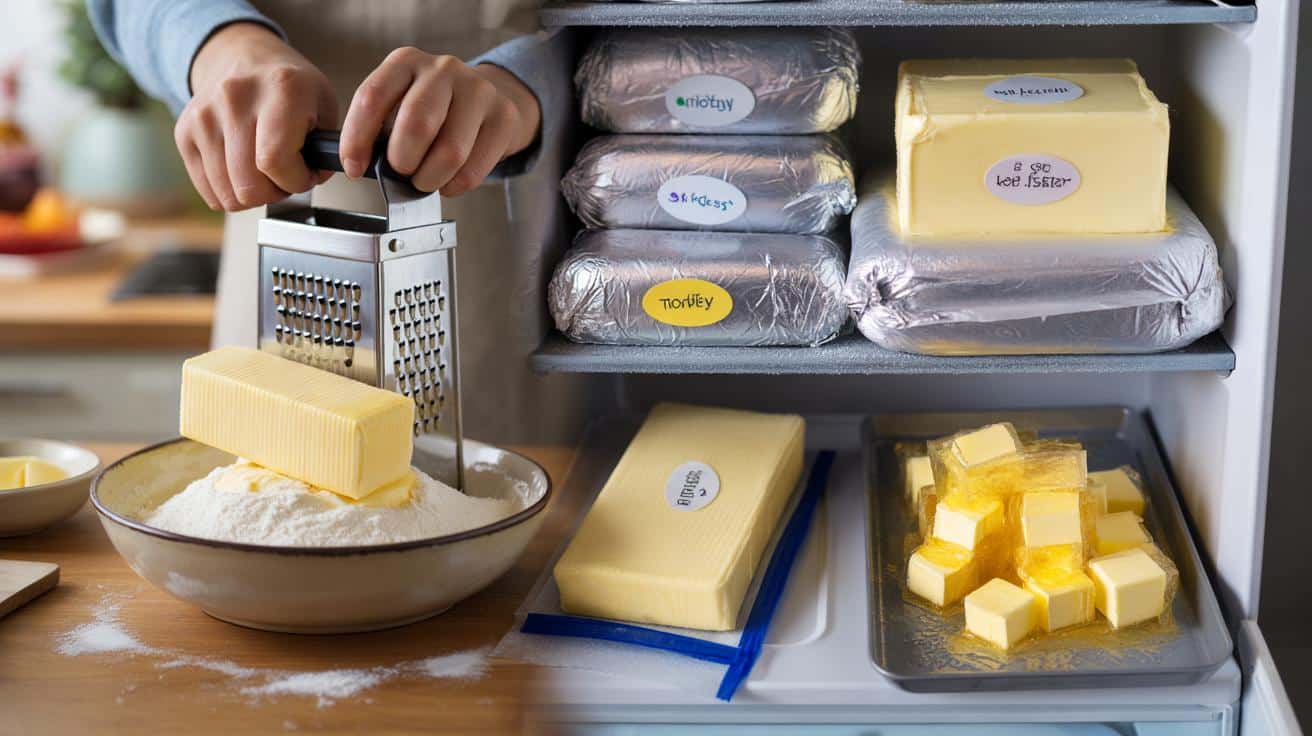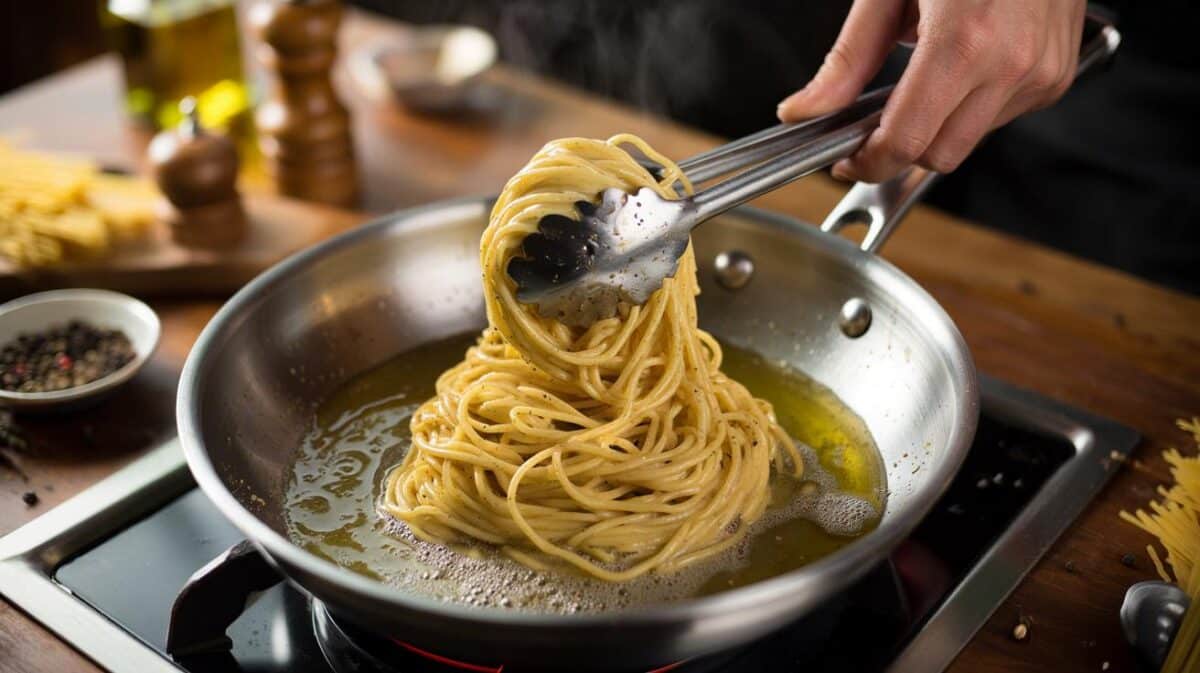A weekly shop is starting to feel like a lottery ticket you didn’t ask to buy. Prices wobble, special offers vanish, and the food we meant to eat turns suspicious overnight. There’s a quieter story though, whispered in freezer aisles and on late‑night WhatsApp threads: a simple habit with a very ordinary ingredient that’s shielding budgets from the yo‑yo. It’s not glamorous. It just works.
The yellow sticker said 39% off. She didn’t hesitate. At home, her kitchen was the sort of organised chaos we all recognise: school letters on the fridge, a drying rack of mugs, a freezer humming like a polite neighbour. She wrapped, labelled, stacked, then reached for one last piece to grate straight into pastry. The cold did the heavy lifting. The saving felt almost smug.
The cold secret: butter
People are freezing butter and quietly sidestepping the supermarket rollercoaster. This isn’t a niche chef’s trick; it’s a home habit spreading through group chats and TikTok captions. **Butter freezes brilliantly and buys you time when prices jump.** You can lock in the price you like, make it last months, and stop half‑used blocks from going weird in the door of the fridge. It’s the kind of small, repeatable move that calms a cupboard and a budget.
We’ve all had that moment when the block you bought for baking sits there, half‑open, collecting fridge smells and guilt. One Manchester family showed me their note‑perfect system: buy two blocks when they’re on promo, portion into 50g pats, wrap, and freeze. They spend around £4.50 less per kilo than full shelf price by timing buys and batching storage, which across school terms and holidays can easily add up to £150–£250 a year. Multiply by the price surges we’ve seen and the numbers creep higher, without lifestyle lectures or coupon spreadsheets.
The science is on your side. Butter’s high fat and low water content mean it freezes cleanly for 6–9 months with no drama. Wraps matter because fat absorbs odours; keep the original foil on, add a layer of baking paper, then slide into a freezer bag to block onion and curry ghosts. Thaw in the fridge for even texture, or run a butter dish under cold water to loosen the chill. Use it from frozen for grating into pastry and scones, or melt directly into sauces and grilled veg. Simple, predictable, boring—in the best way.
How to freeze butter like a pro
Start with portioning. Cut blocks into cooking‑friendly sizes—think 25g for toast and quick sauces, 50g for baking, 100g for a roast. Keep the factory foil on each piece, add a paper wrap, then bag it. Label with salt level, weight, and date; a Sharpie becomes your future self’s best mate. Freeze items spread out on a tray first, then consolidate into a box so they don’t fuse. **Portion first, then freeze; your future self will thank you.**
A few nudges save faff. Salted butter freezes just as well as unsalted, so pair them with different coloured labels. Keep butter away from pungent foods unless you love garlic‑croissant chaos. Move a portion to the fridge the night before you bake; if you forget, cube it small to speed the thaw. Let’s be honest: nobody does this every day. If you’re mid‑week and knackered, go straight from freezer to pan—brown butter waits for no one.
Think about how you cook, then shape the habit to match. Freeze grated butter flat in a zip bag for pastries and crumble toppings; grab a handful and it melts evenly. Clarified butter (ghee) can be portioned in silicone moulds for high‑heat searing with less splatter.
“I stopped chasing offers and started banking them,” said Carla, a south London home cook. “My freezer is basically a savings account with better returns than my bank.”
- Best for freezing: blocks in foil, portioned pats, grated sheets, clarified cubes
- Storage time: 6–9 months frozen; 1–3 weeks chilled after thawing
- Fast uses: grate into pastry, brown straight from frozen, melt into hot veg
What this changes for your kitchen budget
It’s not just money; it’s momentum. One reliable habit tends to spark another: herbs in oil cubes, tomato paste in spoonfuls, bread sliced before freezing. **Small freezer habits add up to big, boring savings.** You spend less on duplicates, throw away less half‑used stuff, and cook more from instinct than panic. There’s a quiet confidence to opening the door and finding tidy rows of potential instead of old mysteries in crumpled foil. This isn’t a hack; it’s a tiny act of control in a noisy week.
| Point clé | Détail | Intérêt pour le lecteur |
|---|---|---|
| Portionner avant de congeler | Coupez en 25–100 g, gardez le papier d’origine, ajoutez un sachet | Gains de temps, moins de gaspillage |
| Profiter des promos | Achetez en lots quand le prix chute, congelez 6–9 mois | Économies lissées sur l’année |
| Utiliser depuis le congélateur | Râpez pour la pâtisserie, faites brunir directement en poêle | Texture au top et cuisine plus fluide |
FAQ :
- Can I freeze both salted and unsalted butter?Yes. Both freeze well. Label clearly so you don’t bake a cake with the wrong one.
- How long does butter last in the freezer?Ideally 6–9 months for best flavour. Well‑wrapped portions can go to a year, but taste can dull.
- What’s the best way to thaw butter?Overnight in the fridge. In a rush, cut into small cubes or grate it to speed things up.
- Can I refreeze butter after thawing?Not advised. Split into smaller portions up front and only thaw what you’ll use.
- Will freezing change the texture?Not noticeably if it’s well wrapped. For baking, many bakers prefer grated butter straight from frozen.










Game changer! I’ve started grating frozen butter into scones—flakiest ever. Defintely keeping a stash when it’s on sale. Thanks for the clear steps.